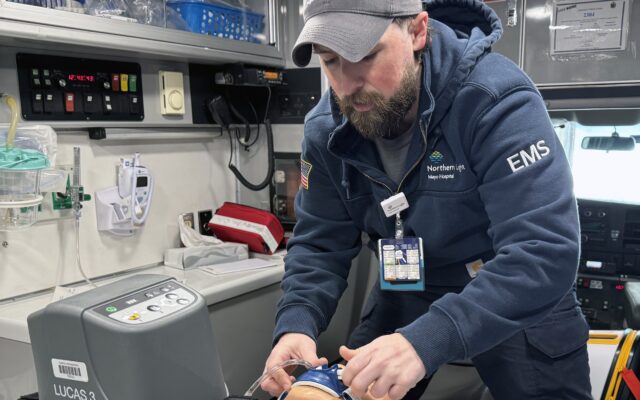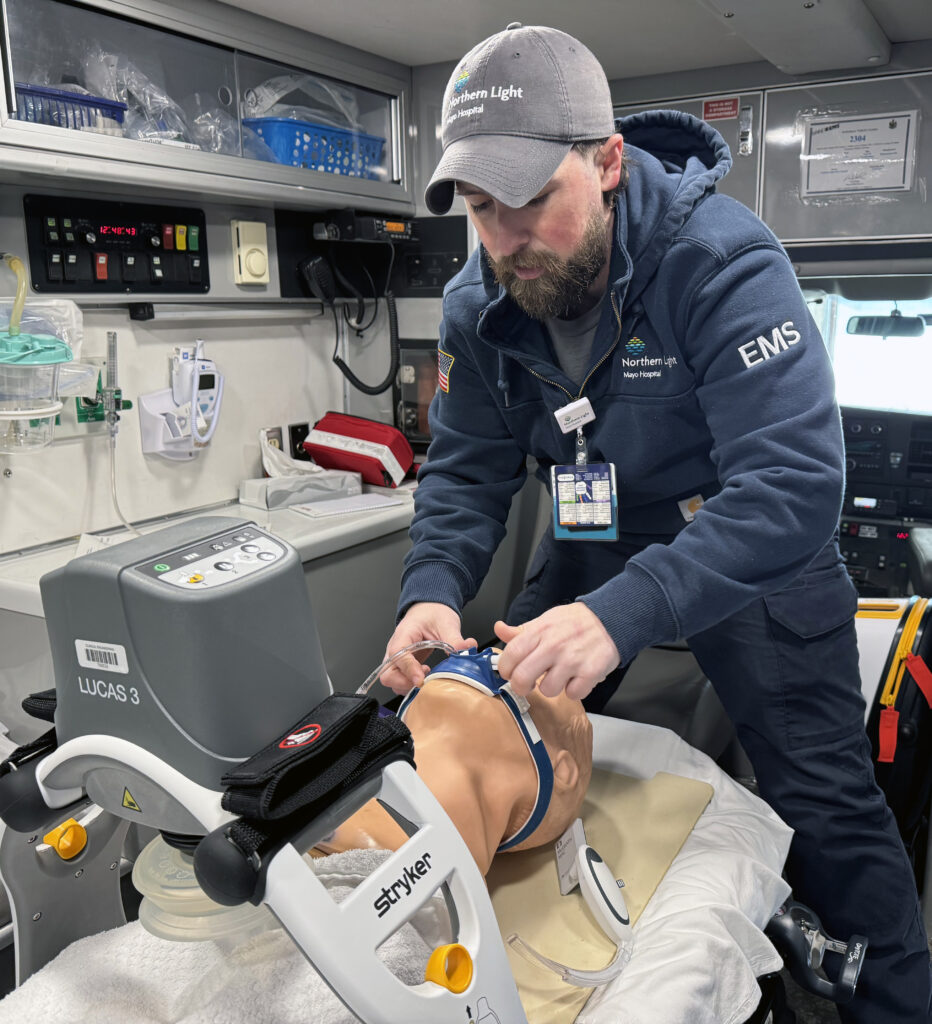
Piscataquis County EMS teams embrace new, lifesaving equipment
Emergency medical technicians and paramedics in Piscataquis County are completing training on new equipment that will help them provide more efficient, effective care.
“We recently took delivery of portable, automatic CPR assistance devices that provide safe, uninterrupted, hands-free chest compressions. The systems can be used in the field during transport and while transitioning to hospital care,” says Brent Watson, RN, BSN, MLT, CEN, CFRN, director of Critical Care at Northern Light Mayo Hospital.

LARYNGOSCOPE — Rich Wilson, lead paramedic, Northern Light Mayo Hospital, demonstrates use of the video laryngoscope and automatic CPR chest compression device.
Delivering manual CPR non-stop is exhausting, and it can be difficult for EMTs and paramedics to provide compressions at a consistent pace and depth over an extended period. Delivering precise CPR by mechanical means may have benefits for both EMTs and patients.
“I’m really excited about adding the CPR device to our ambulance. This device is another tool in our toolbox to help our patients during cardiac arrest. The technology will allow us to give consistent cardiac compressions and free us up to do other interventions in order to give our patients the best chance at positive outcomes,” says Heather Sylvester, paramedic, CA Dean Hospital.
In addition, CA Dean and Mayo Hospitals recently received handheld video laryngoscopes. The scopes provide a better view for paramedics when performing intubation, the process of placing a tube into the windpipe to help patients breathe. The new scopes supplement existing technology that, while highly functional, does not provide paramedics with as clear of a view of the trachea during intubation.
“Having a line-of-sight view matters because it increases the likelihood of successfully performing high-risk intubation procedures on the first try. Improving “first pass” intubation rates is important because repeated attempts increase the risk of complications,” adds Watson.
Also, Northern Light Medical Transport ambulances at Mayo Hospital will soon be equipped with new IV fluid warmers. A specially designed sleeve surrounds the IV tube, warming the fluid as it moves from the bag to the patient.
“This new equipment warms intravascular fluids to improve body temperature. Providing warm fluids enhances patient comfort and provides better maintenance of one’s core body temperature. Starting care early can prevent hypothermia and may improve outcomes,” says Watson.
Staff are being trained to use the new technology and the equipment will be available in ambulances by spring.
The compression devices, laryngoscopes, and fluid warmers were funded by a Maine Emergency Medical Services Stabilization and Sustainability Program grant. The grant provides funding to help ensure Mainers have continued access to high quality emergency medical services. Other components of the grant include funds for educational programming, employee engagement, leadership training, equipment purchases, and more.
Northern Light CA Dean and Mayo Hospital have been providing EMS care in Piscataquis County for several decades. Together, the services provide primary coverage to more than 20 towns as well as unorganized territories in the North Maine Woods.